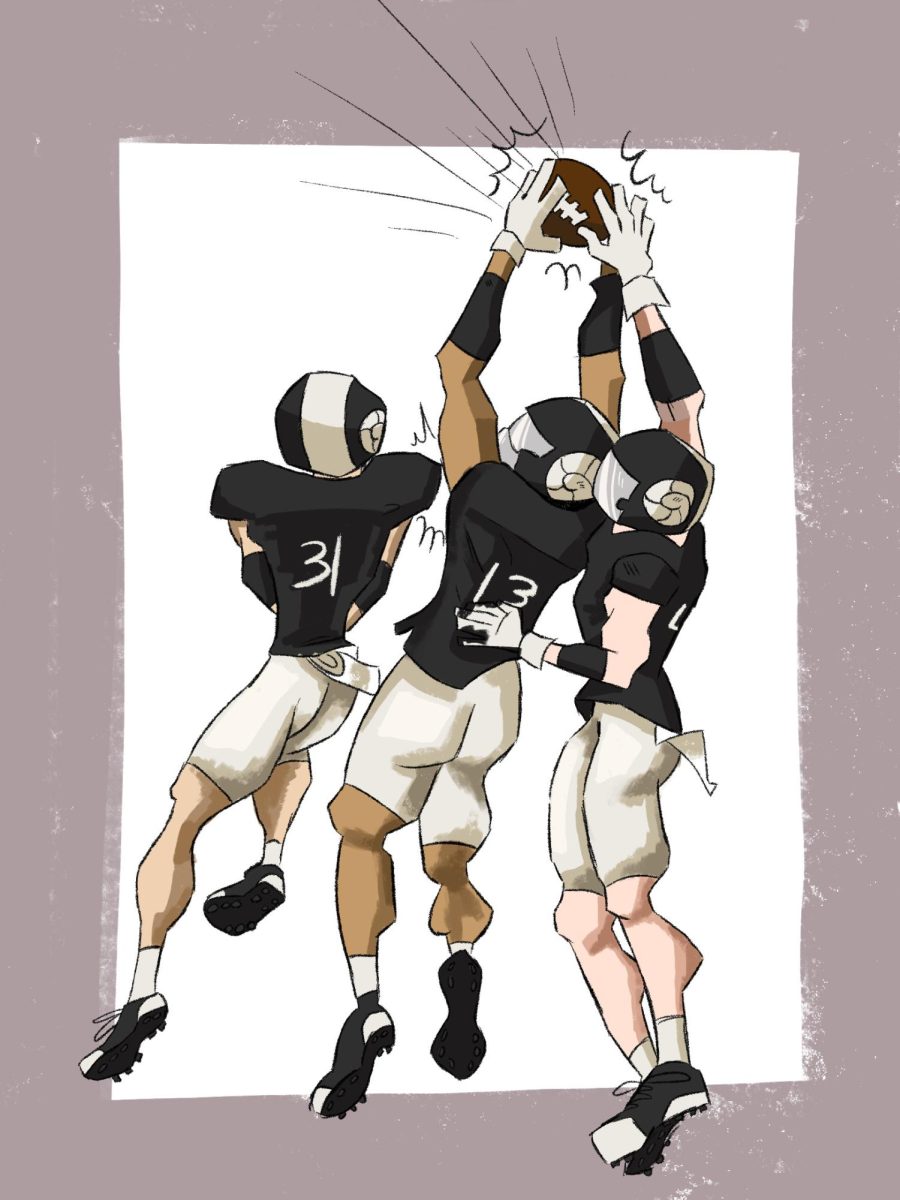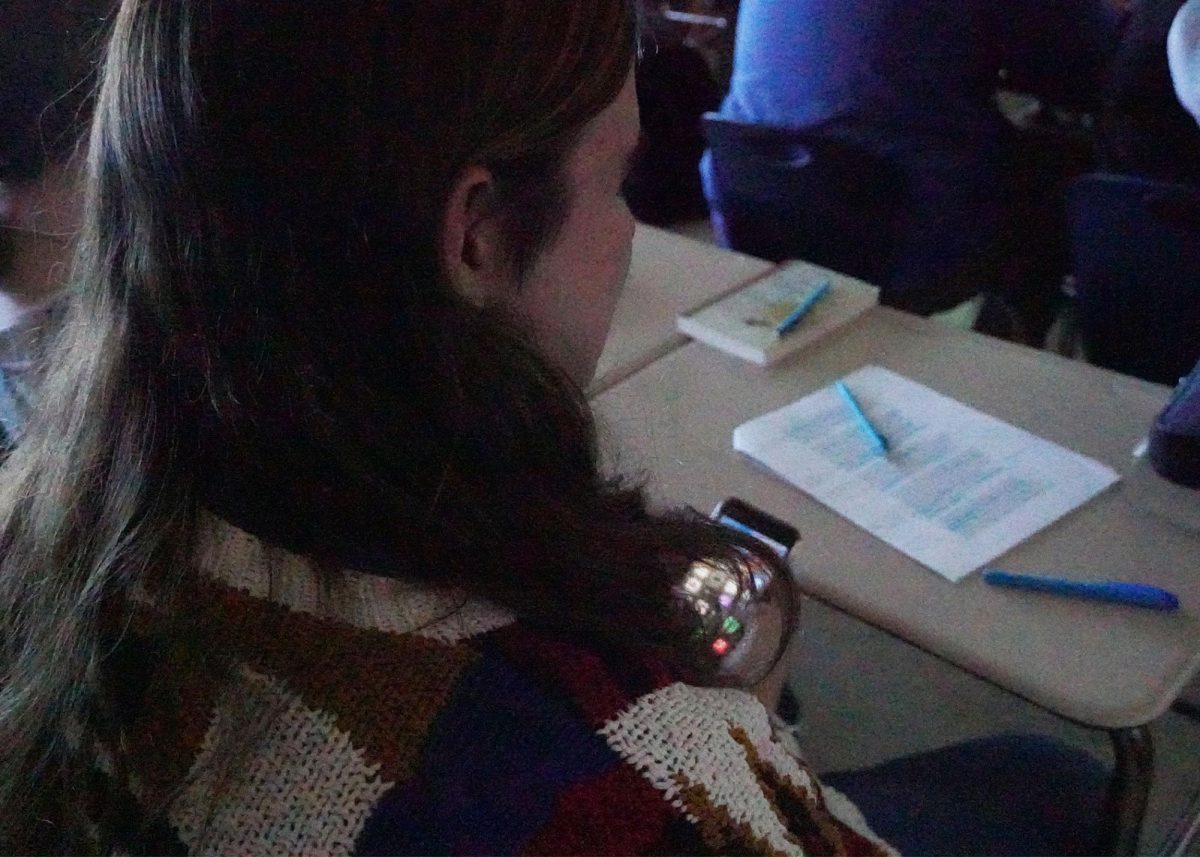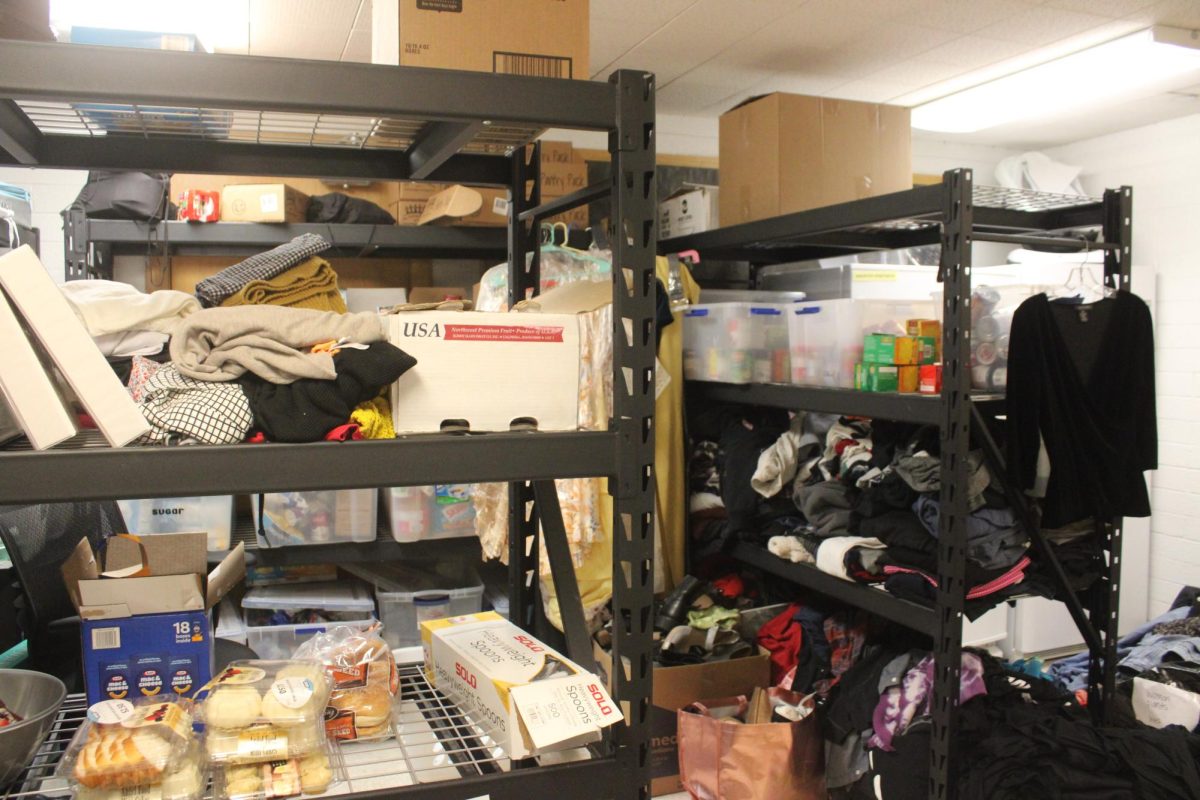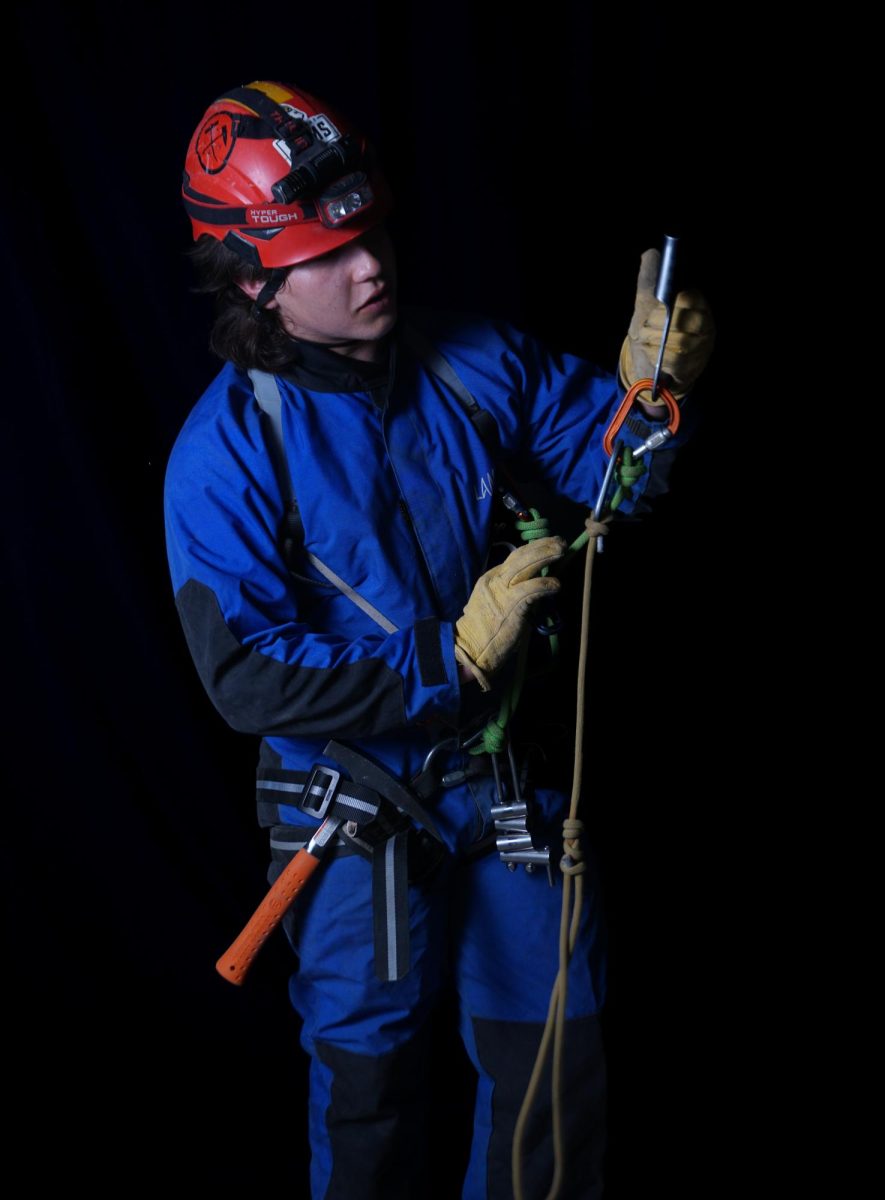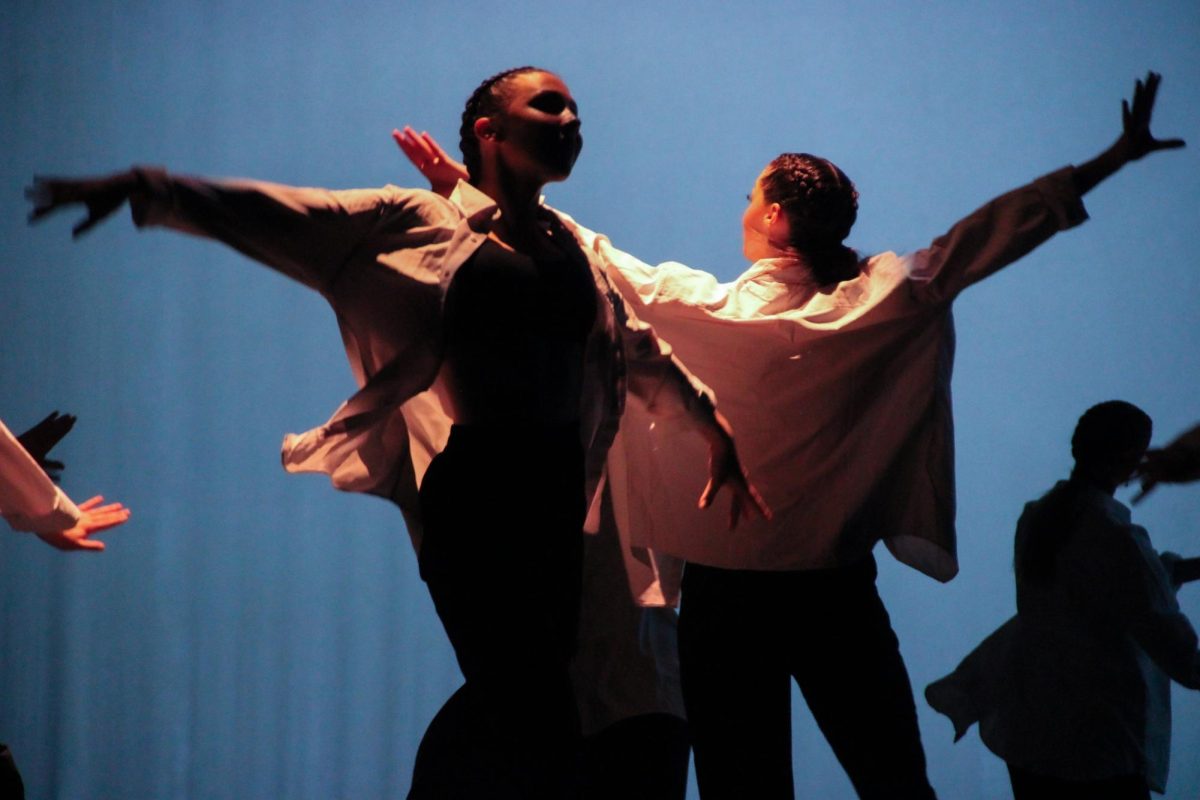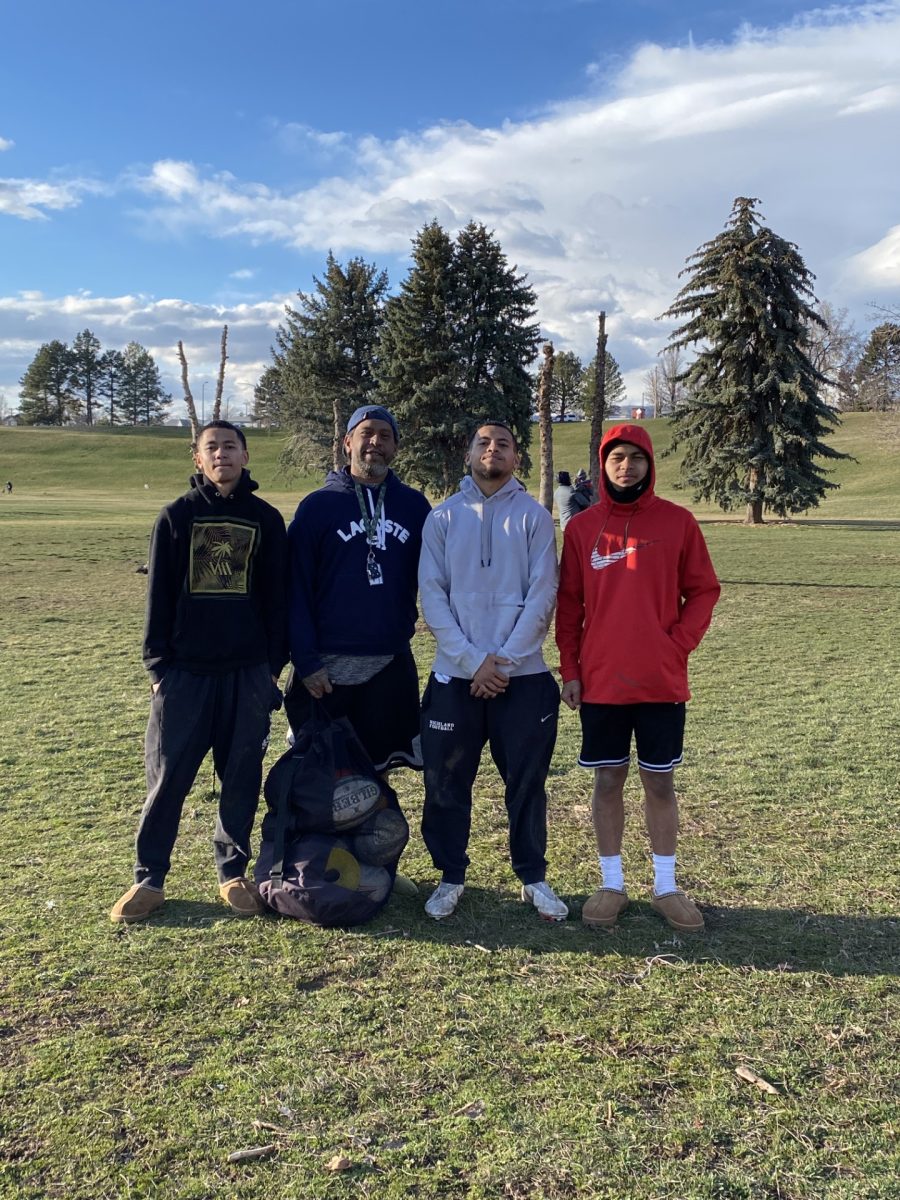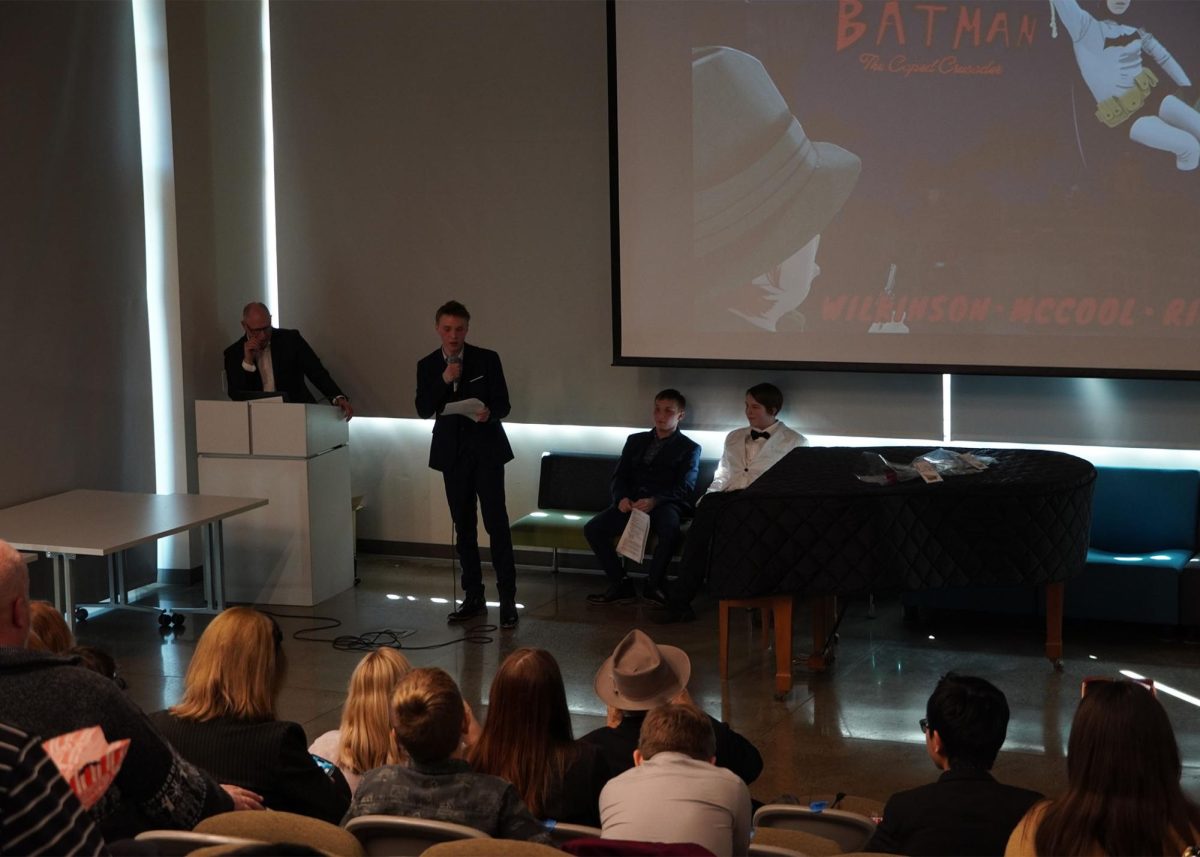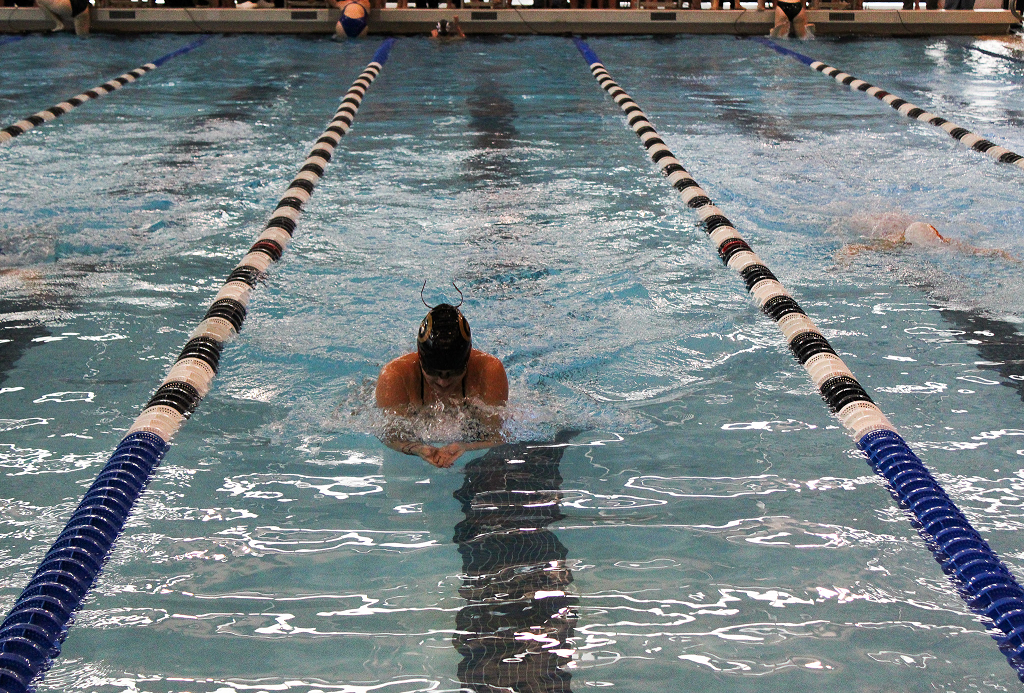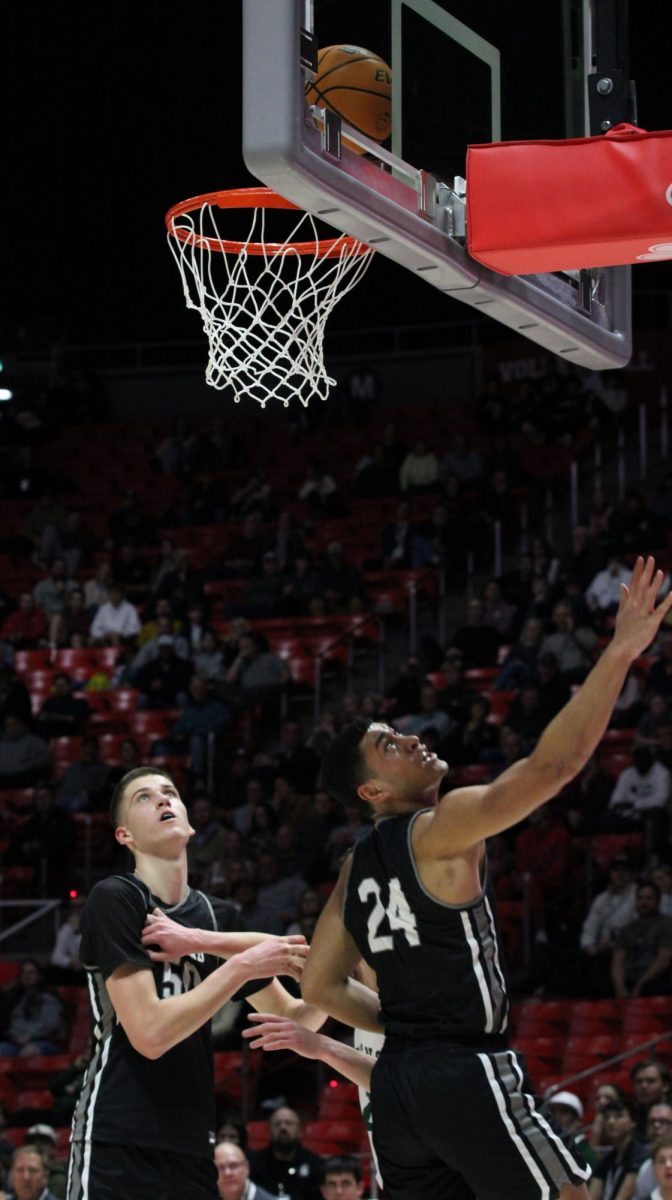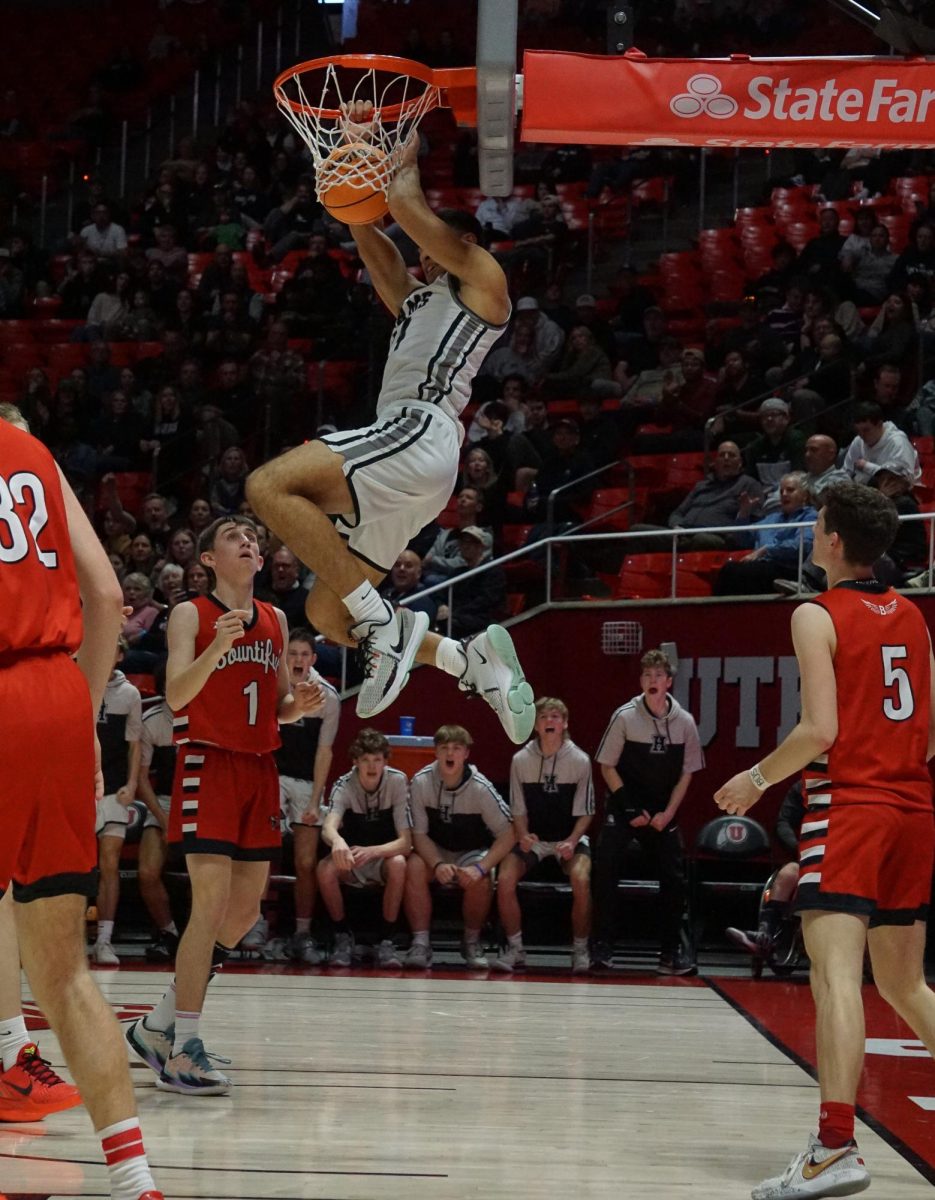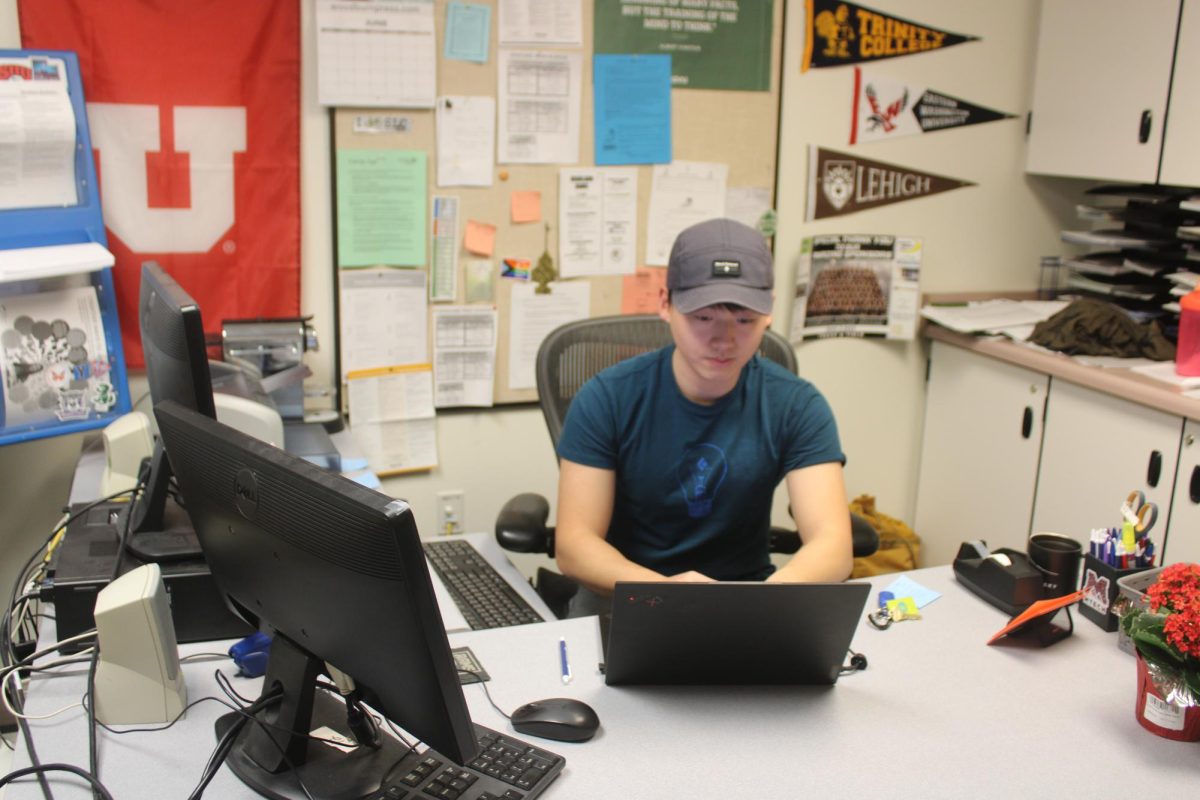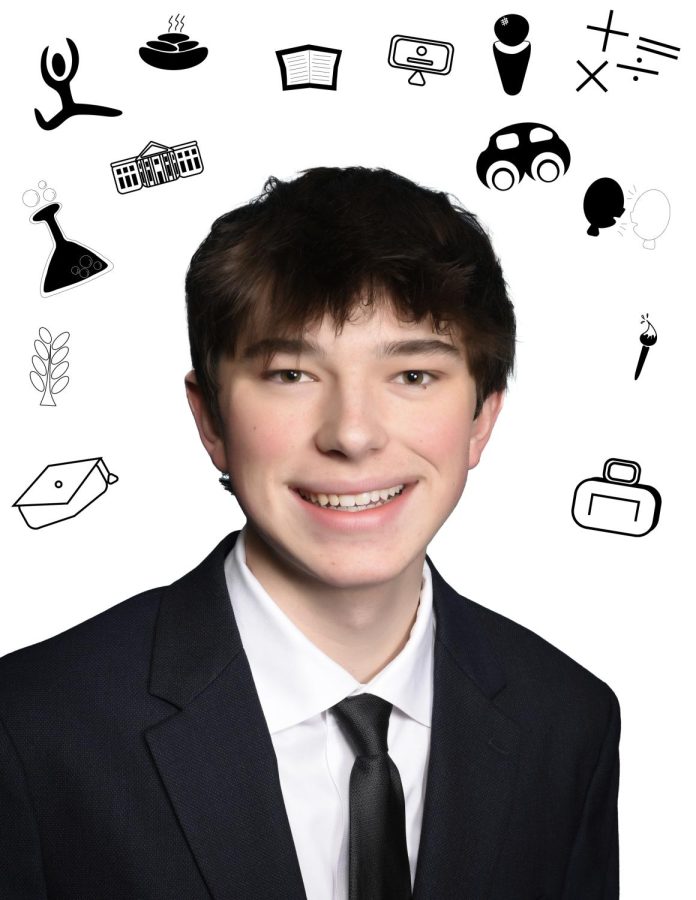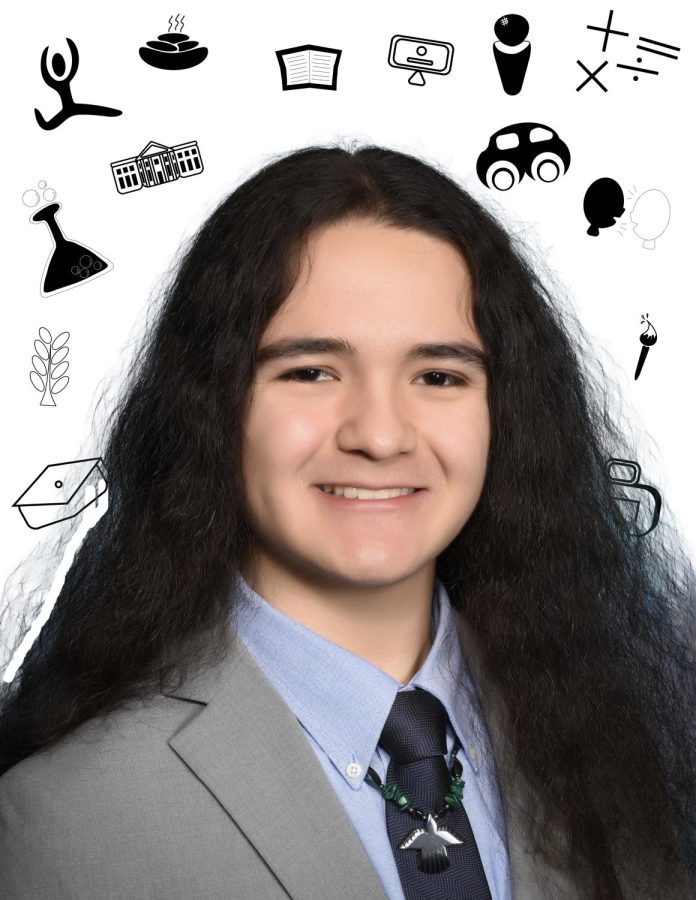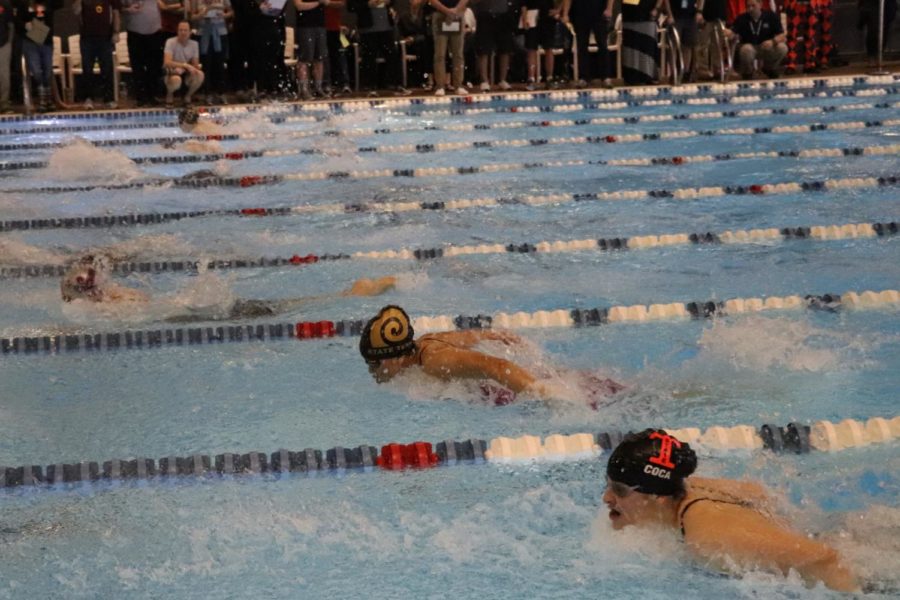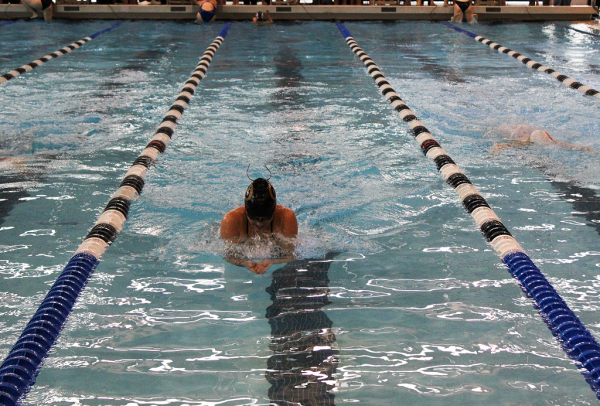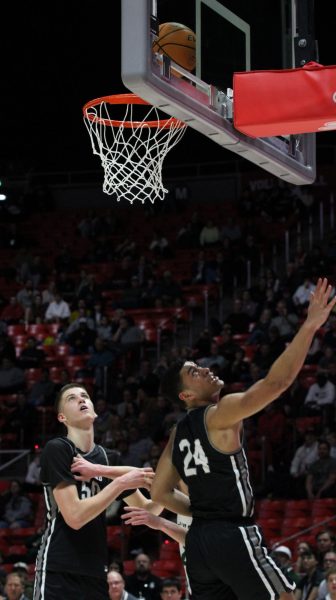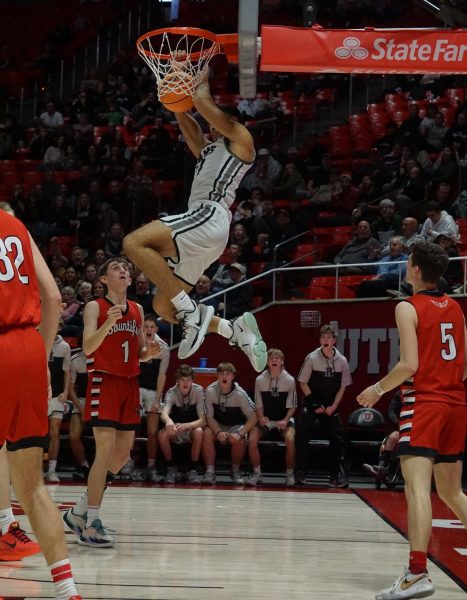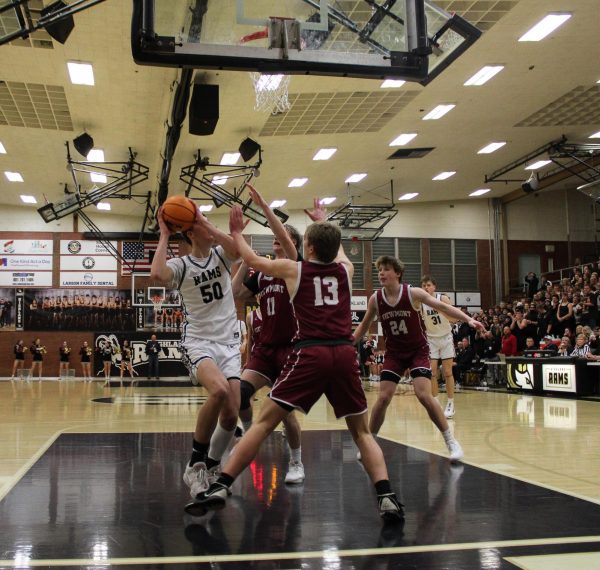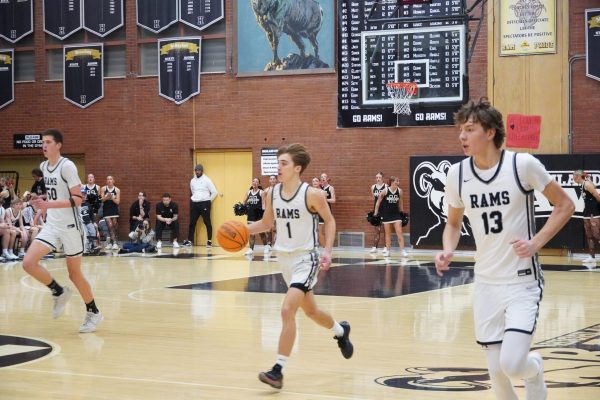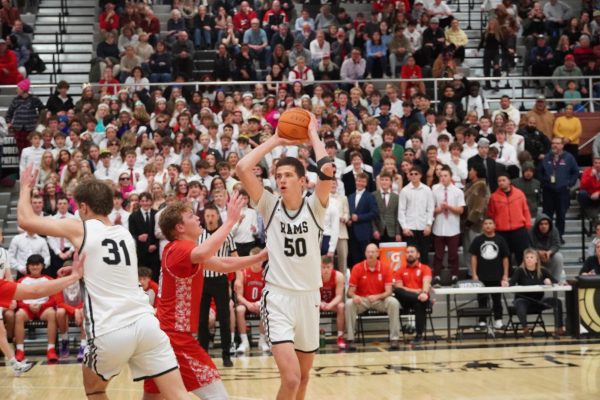Highland Swim Team Celebrates Their Season’s End At State Championships Meet
Highland swimmer Kara Ngu participates in the 100 meter butterfly race at Highland’s state championship meet.
February 20, 2018
“Excuse me everybody, can I have your attention,” Highland state swimmer Sarah Berg boomed. “Can I get three claps for Mark?” Berg prompted, and was quickly answered with the echoing of three unison claps meant to honor Highland Swim team’s coach Mark Gray. More than anything, though, this cheer that the team started this year has been a symbol of how close the team has become, and acted as one of many ways to bring the team together at the start of the team’s state meet.
Highland swim recently wrapped up this year’s season as qualifying swimmers participated in the Utah 5A swimming state championships. After moving into a new, very difficult region, the team was concerned about how they would place at state, but managed to come in 14th for girls and 12th for boys, even with their small team. Although the season has contained some extremely competitive meets, the team was able to have a fantastic last meet, with most of the swimmers earning their best time for the season. This success could be due in part to the new type of practice the team had over this season.
“This year was an experiment year for training, and I’ve seen small improvements,” swim captain Jake Wells said. “I thought overall, practices were better, and we had more time to talk to each other about how we felt about practices and how we felt during our swim meets.”
The experiment was to change the style of practice that was taken by the coach. Though Gray generally tends to create practices with an emphasis on many yards with minimal rest time, this year he chose to adapt his practices to better suit the Highland swimmers, creating practices with faster, shorter swimming, a practice designed to help the many sprinters on the team.
The swim team also owes its success to the supportive environment the swimmers have worked so hard to create.
“Being captain, it was my job to make sure everyone was well-liked and getting along in the pool,” Spencer Gardner, one of Highland’s swim captains, said. “This year especially, we wanted to focus on being a team.”
The strong bond between the whole team has led to more than just strength and commitment during practice, it has also helped with their races in competition.
The team agrees that although they are in the water, catching glimpses of their teammates cheering by their lane of hearing their shouts helps motivate them to work as hard as they can in their race. Not only does the excitement of their teammates give the swimmers adrenaline during their race, but it gives the swimmers a reason outside of themselves to push as hard as they can to go faster.
“My three years on Highland swim team have changed the way I’ve thought of swimming,” Arden Tesch, who has been swimming for eleven years, said. “I’ve always thought of swimming as just an individual sport, but ever since I joined the Highland team, it’s more of a family, and you want to do well for your team, not just for you.”
Everyone on the swim team is there for one another, and that is a big part of what makes it successful. The level of support is so high that the team members don’t need to tell others how their race went, because the other swimmers already know when to congratulate and when to console. The team is not just cheering because they have to, they cheer because they want to, and they want to see their friends, do well.
The reason for the team caring so much for one another is because it is more than just a group of people participating in the same sport, it’s a family.
After spending day after day in the pool at practice, the friendships built among the swimmers grow to be something even bigger than the sport. By the time the end of the season comes and state championships approaches, the act of swimming itself pales in comparison to the family that forms within the team.
“It’s not so much the sport that I love, but the people that I meet,” state swimmer Zak Peterson said. “The people are that most important part of swim for me, it’s not so much a sport as it is a family.”
The friendships that form through the sport become extremely evident during big competitive meets like region and state championships, but also during the team’s annual travel meet to cedar city. During this meet, the swimmers get to stay in a hotel together, and it becomes a big part of the team’s bonding each year whether it’s on the bus, in the hotel, or on deck at the meet.
“The worst part of the Cedar City trip is swimming. The fun part is sitting around with your friends on the team and having fun,” state swimmer Dylan Davis said. “The best part is everything but swimming.”
The time put in by all the swimmers creates an environment that is inclusive not only to the swimmers, but with all the parents and siblings that support the team. Twice a week, parents volunteer at morning practices to make enough breakfast to feed the hungry swimmers. Every year, the team throws a car was fundraiser where parents participate just as much as swimmers whether they are selling baked goods or helping to wash the lines of cars that come to support the team. The swim team opens up a way to keep members of the team occupied and working hard, but it also allows the parents of swimmers to eagerly want to help the hard-working group of students on the team.
“What I found on swim was a community of friends, a community for my family, and an amazing place I could go every day, and there was always a spot for me in the pool, every day.” Swim captain Anna Foulks said.
This family is built not only on people caring for one another, the friends you make on the team act as a support group to help the swimmers make it through the long season they have.
“Practices may suck, but you make friends,” Gardner said. “We’re kind of a family on this team, and you just see each other in the hall and you know what you’re going through.”
Having the longest competition season out of all the high school sports begins to take a toll on the swimmers after attending practice every day after school for several months. But it is the many practices that are required for the swimmers to continue to improve as they become more competitive.
“It’s rough,” state qualifier Tate Butler said. “It’s a big process, and it takes a lot of time.”
Although the swimmers that are able to qualify for state have endured long, hard practices, by the end of the season they can agree that if it weren’t for Gray and his high-intensity practices, they would not be able to get to where they are.
“You don’t get here if you don’t’ work hard and you’re not dedicated.” State swimmer Michael Wallis said.
Many of the swimmers cheer as taper starts at the end of the season, they whine about having to go to practice for two hours every day, and some even say the can’t wait for the season to be over. But, at the end of the day, each and every member of the team gets excited when the new season rolls around.
“I love swim,” state swimmer Olivia White said, “It really is something I look forward to participating in every year.”
Despite the obstacles swim faces with its small team in a highly competitive region, the swimmers work hard to remain competitive with teams that have twice as many swimmers as Highland does. The athletes don’t take their long season for granted, and they fight to drop just hundredths of a second. Many of the members of the team want others to recognize their hard work and success, for they leave their heart and soul in the pool every day that they go to practice.
“I think people should appreciate swim more, because it’s under-appreciated,” state qualifier Lucy Corbett said. “We put a lot of energy into everything, and we do pretty well considering the size of our team.”
